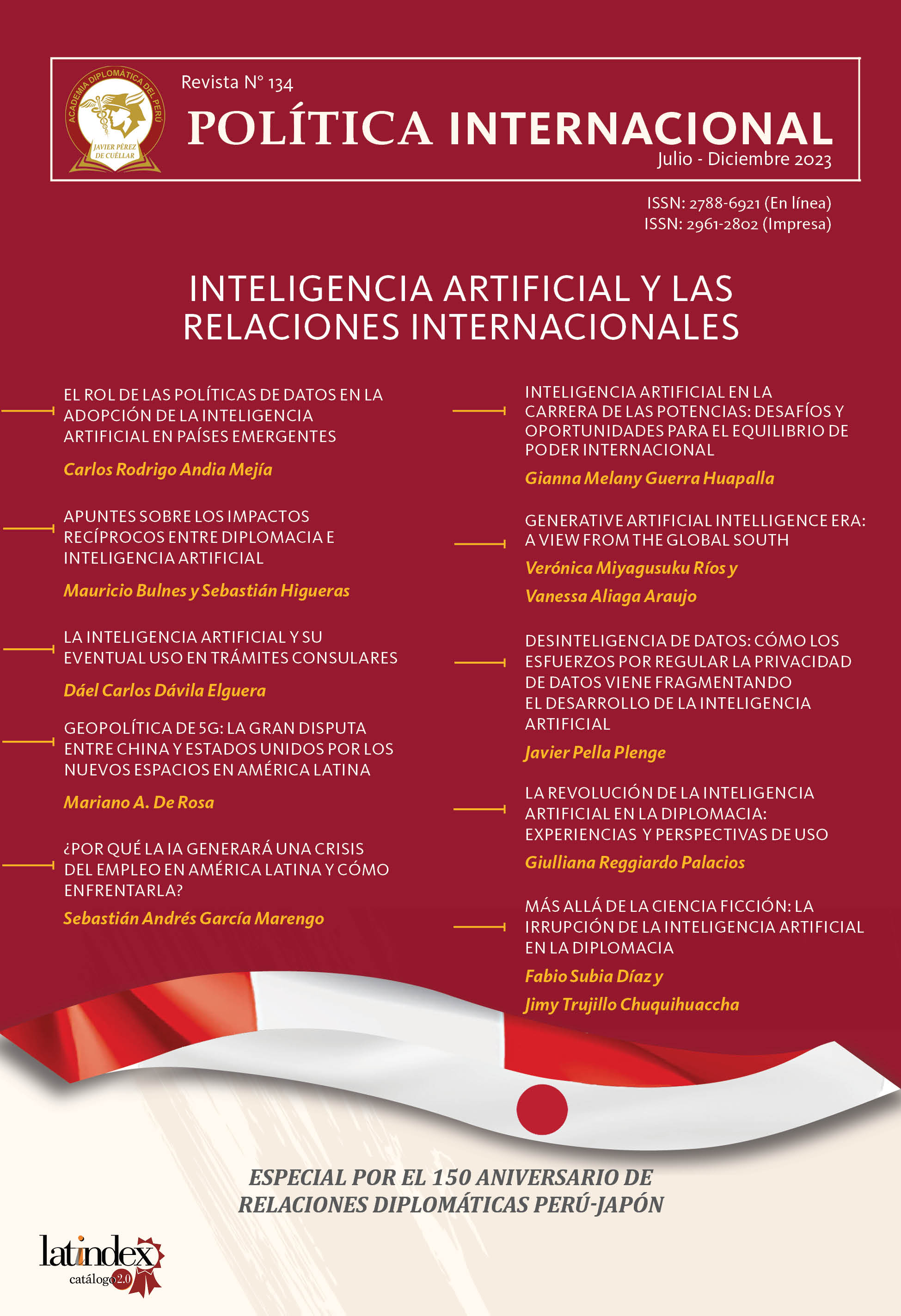Notes on the mutual impact between Diplomacy and Artificial Intelligence
DOI:
https://doi.org/10.61249/pi.vi134.86Keywords:
diplomacy, artificial intelligence, development, big data, productivity, democracy and human rightsAbstract
The present article aims to outline ways in which diplomacy and artificial intelligence can impact each other, within the context of the exponential development of artificial intelligence that must be properly addressed by the international community to leverage the multiple opportunities it presents and simultaneously mitigate potential risks. Thus, a discussion is made based on three lines of reflection: i) possible impacts of AI on diplomacy, ii) ways in which AI can serve as a tool for diplomacy, and iii) ways in which diplomacy can impact the development of AI. In conclusion, the notes developed previously are gathered to urge both greater academic production regarding the intersection between AI and diplomacy and a greater effort by countries to engage in ongoing global processes to address the topic of artificial intelligence.
Downloads
References
Bjola, C. (2020). Diplomacy in the Age of Artificial Intelligence. EDA Working Paper. Emirates Diplomatic Academy.
Bjola, C. (2022). Artificial Intelligence and Diplomatic Crisis Management: Addressing the Fog of War Problem. Working Paper No 6. Oxford Digital Diplomacy Research Group.
Chui, M., Hazan, E., Roberts, R., Singla, A., Smaje, K., Sukharevsky, A. & Zemmel, R. (2023). The economic potential of generative AI: the next productivity frontier. McKinsey & Company.
DiploFoundation. (2019). Mapping the challenges and opportunities of artificial intelligence for the conduct of diplomacy.
Feijóo, C., Kwon, Y., Bauer, J., Bohlin, E., Howell, B., Jain, R., Potgieter, P., Vu, K., Whalley, J. & Xia, J. (2022). Harnessing artificial intelligence (AI) to increase wellbeing for all: The case for a new technology diplomacy. Telecommunications Policy 44, 1-14.
Gasser, U. & Almeida, V. (2017). A Layered Model for AI Governance. IEEE Internet Computing, 21 (6) (November), 58–62.
Hammond, K. (2023). What is artificial intelligence? Computerworld. https://www.computerworld.com/article/2906336/what-is-artificial-intelligence.html
Kak, A. & Myers, S. (2023). AI Now 2023 Landscape: Confronting Tech Power. AI Now Institute. https://ainowinstitute.org/wp-content/uploads/2023/04/AI-Now-2023-Landscape-Report-FINAL.pdf
Kreps, S. & Kriner, D. (2023). How AI Threatens Democracy. Journal of Democracy, 34(4), 122-131.
Narechania, T. (2022). Machine Learning as Natural Monopoly. Iowa Law Review, 107(4), 1543-1614.
Noy, S. & Zhang, W. (2023). Experimental evidence on the productivity effects of generative artificial intelligence. Science, 381(6654), 187-192.
Pérez de Cuellar, J. (1997). Manual de derecho diplomático. Fondo de Cultura Económica.
Scott, B., Heumann, S. & Lorenz, P. (2018). Artificial Intelligence and Foreign Policy. Stiftung Neue Verantwortung.
Searle, J. (1980). Minds, brains, and programs. Behavioral and Brain Sciences, 3(3), 417-424.
Taddeo, M. & Floridi, L. (2018). How AI can be a force for good. Science, 361(6404), 751-752.
Downloads
Published
How to Cite
Issue
Section
License
Copyright (c) 2023 Elka Saldarriaga

This work is licensed under a Creative Commons Attribution 4.0 International License.









